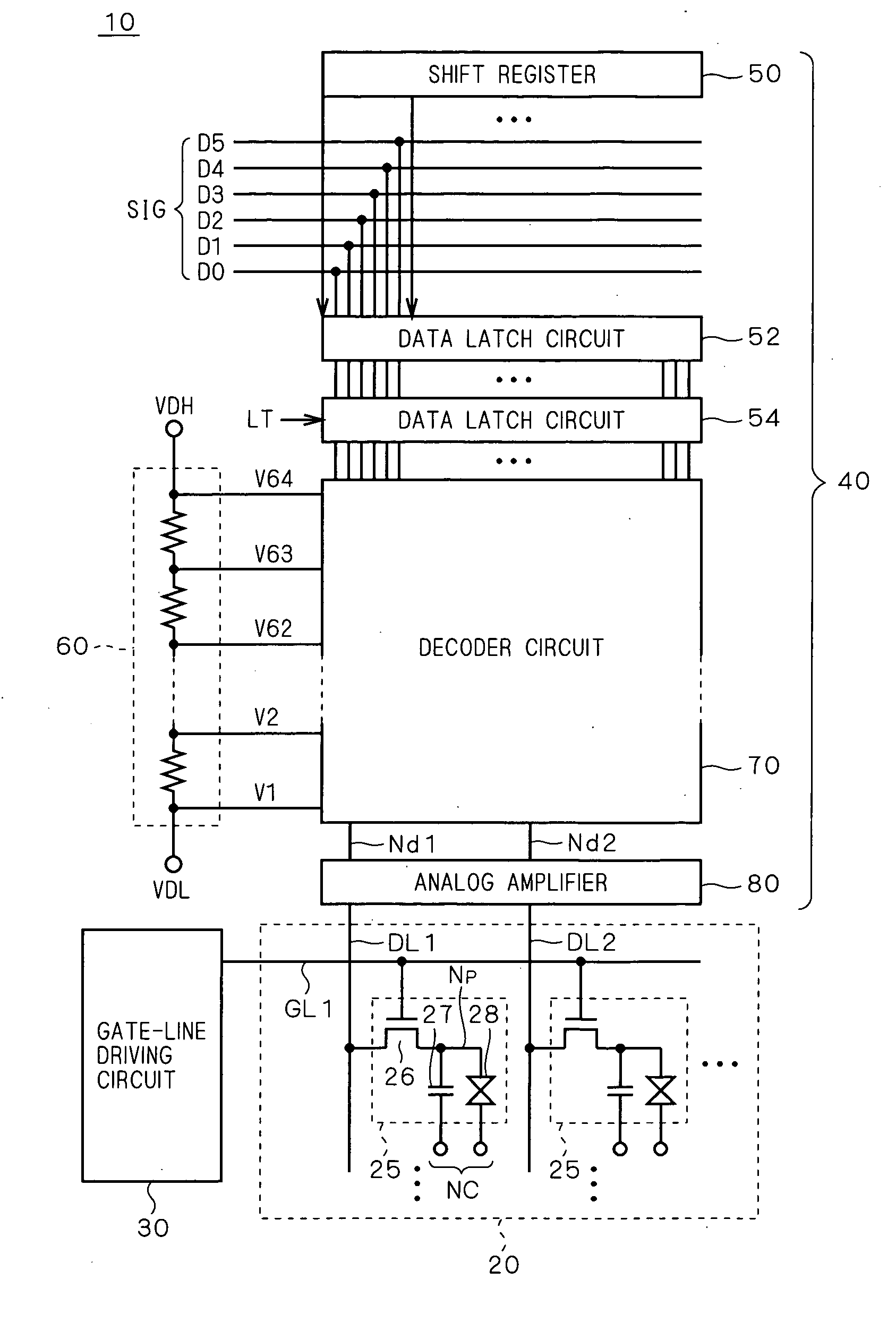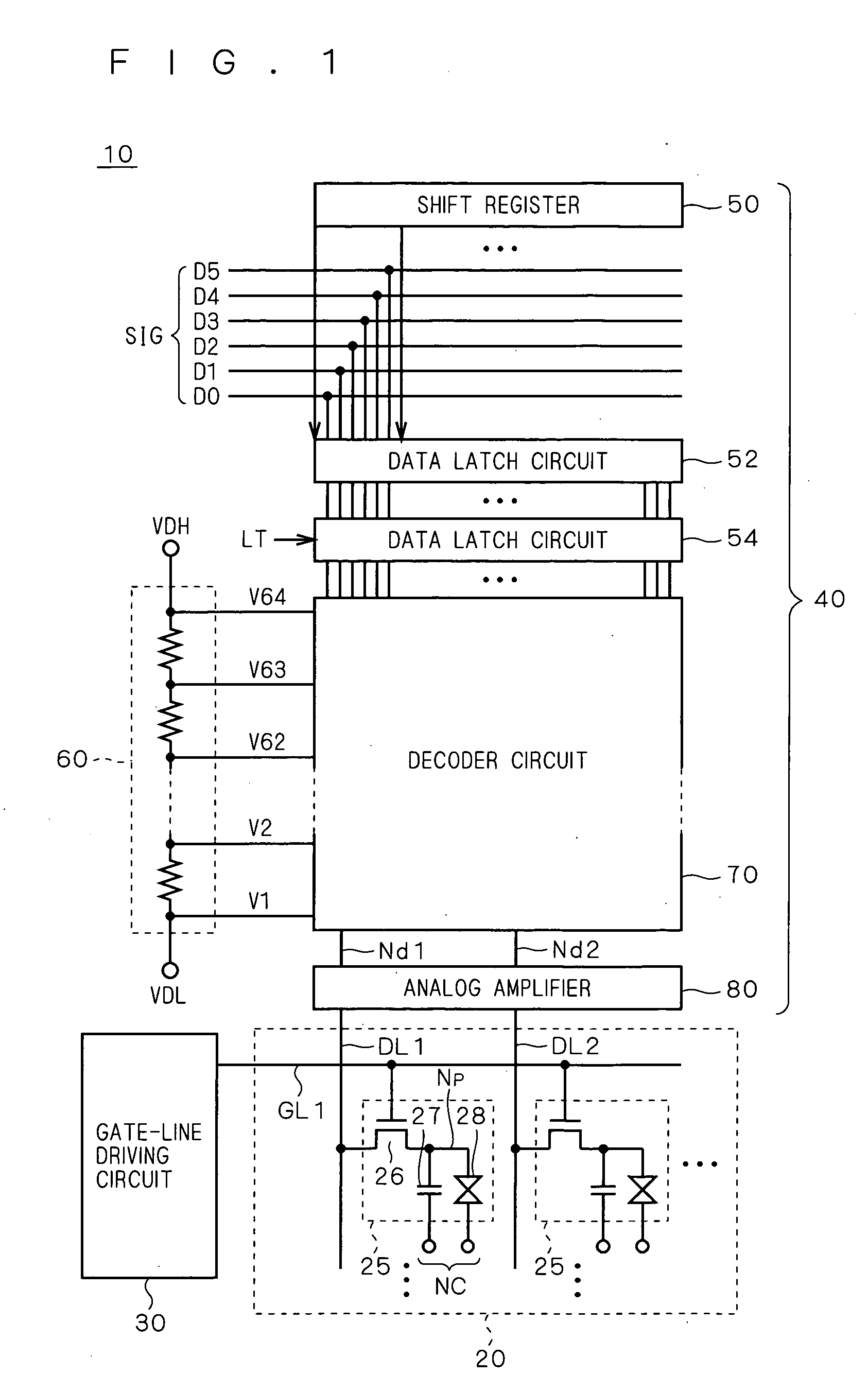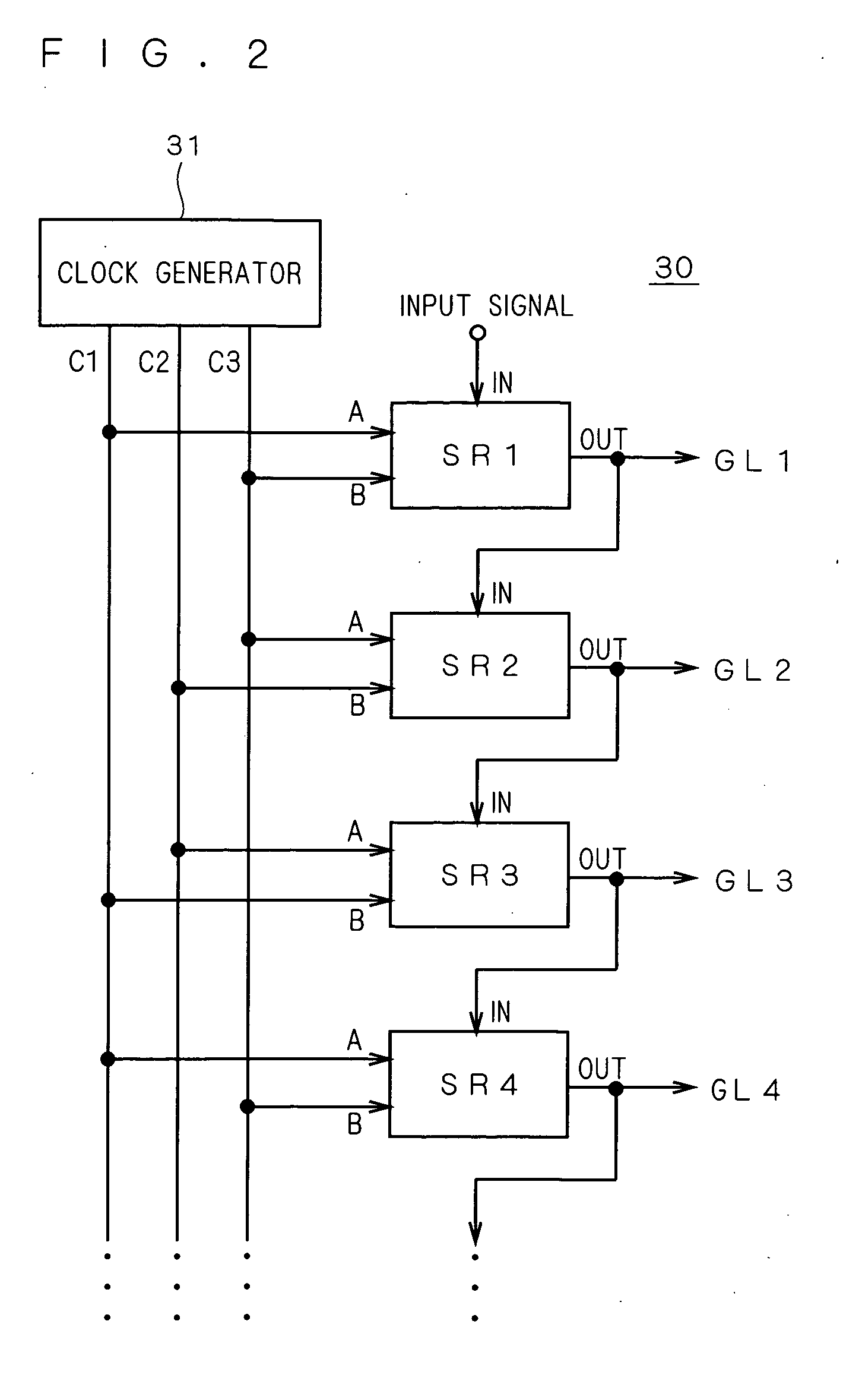Shift register and image display apparatus containing the same
- Summary
- Abstract
- Description
- Claims
- Application Information
AI Technical Summary
Benefits of technology
Problems solved by technology
Method used
Image
Examples
first preferred embodiment
[0048]FIG. 1 is a schematic block diagram illustrating the configuration of a display apparatus according to the present invention. The overall configuration of a liquid crystal display 10 is shown as an representative example of the display apparatus.
[0049] The liquid crystal display 10 is provided with a liquid crystal array part 20, a gate-line driving circuit (scanning-line driving circuit) 30 and a source driver 40. As will be described later explicitly, a shift register according to the present embodiment is mounted on the gate-line driving circuit 30.
[0050] The liquid crystal array part 20 includes a plurality of pixels 25 arrayed in a matrix. The columns of pixels (hereinafter also referred to as “pixel lines”) are respectively provided with gate lines GL1, GL2, . . . (hereinafter also generically referred to as a “gate line GL”), and the rows of pixels (hereinafter also referred to as “pixel rows”) are respectively provided with data lines DL1, DL2, . . . (hereinafter gen...
second preferred embodiment
[0104]FIG. 9 is a circuit diagram illustrating the configuration of a unit shift register SR according to a second preferred embodiment. In the first preferred embodiment, the transistor T8 for applying the voltage VDM to the node N3 has its gate connected to the node N1, however, the transistor T8 has its gate connected to the output terminal OUT in the present embodiment. That is, the transistor T8 is turned on when the output terminal OUT transitions to VDD.
[0105] Accordingly, in the present embodiment, the voltage VDM is applied to the node N3 via the transistor T8 only between time t4 and time t5 in the timing chart shown in FIG. 4. The node N3 is kept at VDM between time t5 and time t6 as it is in the floating state in that period. More specifically, in the present embodiment, the transistor T4 is in the negative-biased state between time t4 and time t6, which prevents the occurrence of leakage current at the node N1.
[0106] A period during which the occurrence of leakage cur...
third preferred embodiment
[0109]FIG. 10 is a circuit diagram illustrating the configuration of a unit shift register SR according to a third preferred embodiment. In the present embodiment, the gate of the transistor T1 and the node N1 are connected via the transistor T9. The transistor T9 has its gate connected to a fourth power terminal s4. In the present embodiment, the fourth power terminal s4 is connected to the power source VDD, similarly to the first and second power terminals s1 and s2. Here, a connection node between the gate of the transistor T1 and the transistor T9 is defined as a node N4.
[0110] In the unit shift register SR according to the present embodiment, the node N4 is also charged to the VDD−Vth as well as the node N1 when an input signal is input to the input terminal IN. Then, the clock signal C1 input to the first clock terminal A transitions from 0V to VDD, and the node N4 rises to 2×VDD−Vth by capacitive coupling caused by the gate-to-channel capacitance of the transistor T1. Howeve...
PUM
| Property | Measurement | Unit |
|---|---|---|
| Electric potential / voltage | aaaaa | aaaaa |
| Semiconductor properties | aaaaa | aaaaa |
Abstract
Description
Claims
Application Information
 Login to View More
Login to View More - R&D
- Intellectual Property
- Life Sciences
- Materials
- Tech Scout
- Unparalleled Data Quality
- Higher Quality Content
- 60% Fewer Hallucinations
Browse by: Latest US Patents, China's latest patents, Technical Efficacy Thesaurus, Application Domain, Technology Topic, Popular Technical Reports.
© 2025 PatSnap. All rights reserved.Legal|Privacy policy|Modern Slavery Act Transparency Statement|Sitemap|About US| Contact US: help@patsnap.com



